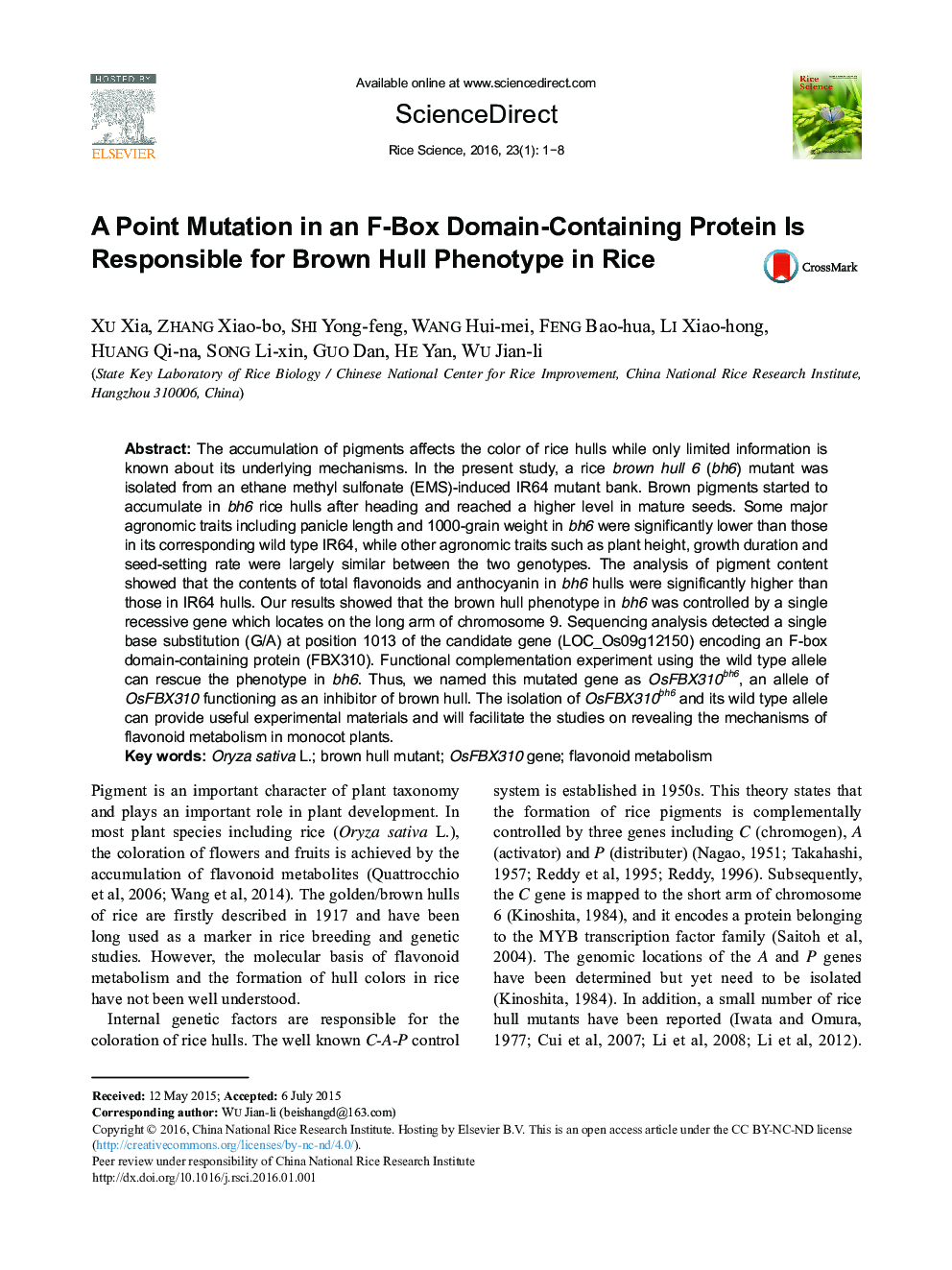| Article ID | Journal | Published Year | Pages | File Type |
|---|---|---|---|---|
| 4501758 | Rice Science | 2016 | 8 Pages |
The accumulation of pigments affects the color of rice hulls while only limited information is known about its underlying mechanisms. In the present study, a rice brown hull 6 (bh6) mutant was isolated from an ethane methyl sulfonate (EMS)-induced IR64 mutant bank. Brown pigments started to accumulate in bh6 rice hulls after heading and reached a higher level in mature seeds. Some major agronomic traits including panicle length and 1000-grain weight in bh6 were significantly lower than those in its corresponding wild type IR64, while other agronomic traits such as plant height, growth duration and seed-setting rate were largely similar between the two genotypes. The analysis of pigment content showed that the contents of total flavonoids and anthocyanin in bh6 hulls were significantly higher than those in IR64 hulls. Our results showed that the brown hull phenotype in bh6 was controlled by a single recessive gene which locates on the long arm of chromosome 9. Sequencing analysis detected a single base substitution (G/A) at position 1013 of the candidate gene (LOC_Os09g12150) encoding an F-box domain-containing protein (FBX310). Functional complementation experiment using the wild type allele can rescue the phenotype in bh6. Thus, we named this mutated gene as OsFBX310bh6, an allele of OsFBX310 functioning as an inhibitor of brown hull. The isolation of OsFBX310bh6 and its wild type allele can provide useful experimental materials and will facilitate the studies on revealing the mechanisms of flavonoid metabolism in monocot plants.
